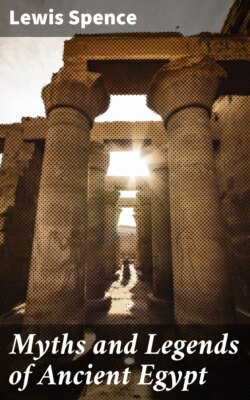Читать книгу Myths and Legends of Ancient Egypt - Lewis Spence - Страница 21
На сайте Литреса книга снята с продажи.
The Ba
ОглавлениеThe ba, as has been mentioned, did not remain with the body, but took wing after death. Among primitive peoples—the aborigines of America, for instance—the soul is frequently regarded as possessing the form and attributes of a bird. The ability of the bird to make passage for itself across the great ocean of air, the incomprehensibility of its gift of flight, the mystery of its song, its connexion with 'heaven,' render it a being at once strange and enviable. Such freedom, argues primitive man, must have the liberated soul, untrammelled by the hindering flesh. So, too, must gods and spirits be winged, and such, he hopes, will be his own condition when he has shaken off the mortal coil and rises on pinions to the heavenly mansions. Thus the Bororos of Brazil believe that the soul possesses the form of a bird. The Bilquila Indians of British Columbia think that the soul dwells in an egg in the nape of the neck, and that upon death this egg is hatched and the enclosed bird takes flight. In Bohemian folk-lore we learn that the soul is popularly conceived as a white bird. The Malays and the Battas of Sumatra also depict the immortal part of man in bird-shape, as do the Javanese and Borneans. Thus we see that the Egyptian concept is paralleled in many a distant land. But nowhere do we find the belief so strong or so persistent over a prolonged period of time as in the valley of the Nile.
No race conferred so much importance and dignity upon the cult of the dead as the Egyptian. It is no exaggeration to say that the life of the Egyptian of the cultured class was one prolonged preparation for death. It is probable, however, that he was, through force of custom and environment, unaware of the circumstance. It is dangerous to indulge in a universal assertion with reference to an entire nation. But if any people ever regarded life as a mere academy of preparation for eternity, it was the mysterious and fascinating race whose vast remains litter the banks of the world's most ancient river, and frown upon the less majestic undertakings of a civilization which has usurped the theatre of their myriad wondrous deeds.
[1] Certain forms of belief are now spoken of by some mythologists as 'pre-animistic.' But these are not as yet sufficiently well defined to permit of accurate classification. See Marett, The Threshold of Religion.
[2] K. von den Steinen Unter den Naturvolker Zentral-Brasiliens (Berlin, 1894).
[3] See Myths and Legends of the North American Indians, p. 87.
[4] See Handbook of North American Indians, article "Cheyenne."
[5] As do many primitive supernatural beings all over the world.
[6] This is typical of many water gods in America and Australia. See Lang, Myth, Ritual, and Religion, vol. i, p. 43.
[7] See Gomme, Ethnology in Folklore.
[8] See Lang, The Making of Religion and The New Mythology, for hypothesis of a monotheism prior to animistic belief.
[9] H. de Charencey, Le Mythe de Votan, p. 39. There is but little substantiation for the latter part of this statement, however. The bacabs were closely identified with the Maya chac, or rain-gods.
[10] See my Myths of Mexico and Peru.
